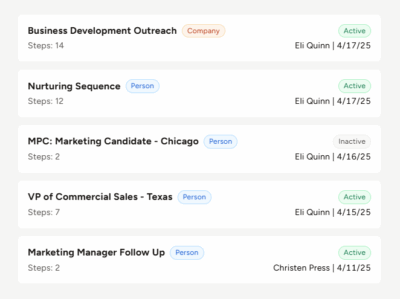Today’s world is full of noise. Every one minute of the day, 500 hours of video is uploaded to YouTube, 3.3 million posts are created on Facebook, and 3.8 million Google searches are performed. And those numbers just scratch the surface of the amount of content creation that occurs minute-by-minute in our digital world — content that is competing for the attention of your potential candidates.
Although 90 percent of global professionals state that they want to hear from a recruiter, in a study, just 10 percent of professionals who saw a job posting applied for the position. With decreasing unemployment rates and younger generations’ changing attitudes towards what they want from employment, candidates are getting pickier about where they apply.
How to make a job posting that performs
A high-performing job posting needs to not only cut through the noise to grab a job seeker’s initial attention, it needs to hold that attention all the way through to the “Apply Now” button. Here are six best practices to create a job posting that works.
1. Start with the title
Writing a good job posting title is like a content marketer or journalist choosing a click-worthy headline. While eight of ten people read headline copy, just two people go on to read the rest. Recruiting has a lot in common with marketing, so don’t be afraid to read up on best headline practices from the marketing pros. Your job title should make it clear what the job is so you attract the right candidates, but also needs an injection of personality, benefits, or fun to make it stand out from the other 50 postings for the same type of role.
2. Lead in
Once you’ve gotten a prospect to click on your title, you don’t want to lose them less than two lines in. So don’t follow a template. Think about the number of cover letters you’ve read that all start with the same “I’m writing to express my interested in the role of …” line. They blend into one another. Candidates feel the same about job postings that all begin with “Company X is seeking someone to fill the role of Position Y.” It’s formulaic and repetitive — they already know the role name and perhaps the employer from the title.
Your first two lines of copy need to generate enough excitement to keep the candidate reading through to the qualifications and application details. Who is the person you’re looking for? Why should they care about this job? Answer those questions in a story — when you use narrative arc you actually light up more areas of readers’ brains.
3. Bypass the boring details
You’ll see a lot of templated postings that include something along the lines of, “this position reports to the head of …”. But at this point, no one cares. Adding those extra lines of content is like including the side effects at the bottom of a medical ad — except the FDA isn’t making you do it. Focus on what’s most compelling (the company’s mission, the location, the room for growth, etc) and pertinent (who is qualified to apply, how to apply) and leave out the rest.
4. Add personality
Sixty-four percent of millennials state that they would rather make $40K per year at a job they love than $100K per year at a “boring” job. And their decision as to whether a potential employer is or is not boring starts with the job post. Ensure your posts bring forward the company’s personality. Alter the voice in which you write to fit each employer. Include a section about some of the fun aspects of employment — core values, company retreats, office perks, and so on.
5. Make it scannable
People read online content 25 percent slower than they read print. And much of that slow down has to do with the number of distractions we have on our computer, phone, or tablet screens.
Older generations and newspaper die-hards like to give younger groups flack about their love of list-style articles and Tweets. However, the reality is, scannable content is simply easier to digest in a digital environment. Ensure your job postings are easy to get through at a glance — use bolding and subheads to make sections and hierarchy clear. Make the call to apply easy to find and follow.
6. Say what you mean
Does a particular posting have stringent qualifications for a hire? Or is the company you’re recruiting for looking for a generalist? Is there any flexibility in location? Or do candidates have to be on site?
It can be tempting to be vague about required qualifications in a job posting. With less hurdles to leap over, more candidates will apply. However, fewer of those candidates will be cut out for the job. It’s better to be as specific as possible about what it will take to get hired. That way, you will be less likely to get unqualified candidates filling your inbox and more likely to have candidates who experience that “This job is TOTALLY me” moment and can’t wait to apply.
Today more than ever, job seekers are looking for more than just a steady paycheck. They’re looking for fulfillment. The dry, formulaic job postings of previous years won’t cut it with these changing desires and increased noise. Think like your candidates, write like a marketer, and watch the highly qualified applicants roll in.
Taylor Burke is a contributor for TechnologyAdvice.com, covering marketing and communications. When she’s not in front of her screen, you can find Taylor reading, cooking, running, or hanging with her dog—but rarely all four at once. Connect with her on LinkedIn.








